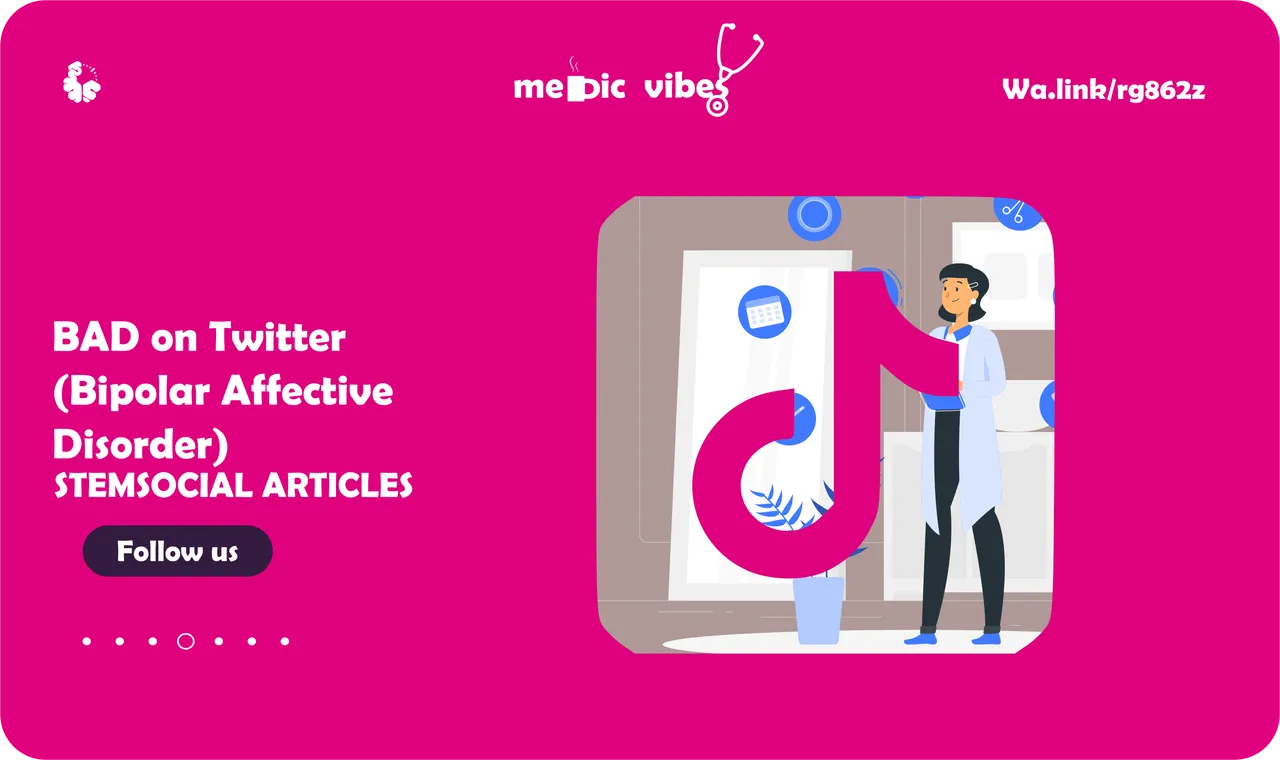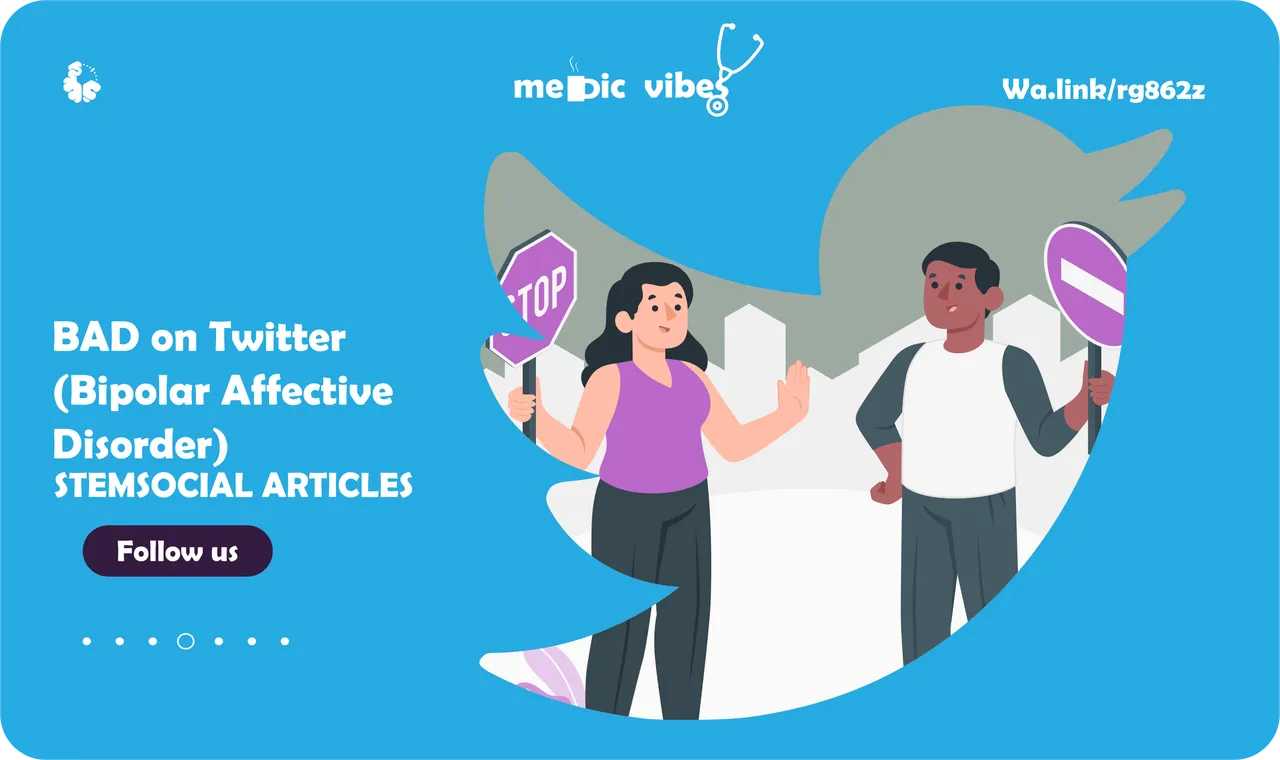
Inkscape.org
Depression vector created by pch.vector - www.freepik.com and
In the last post, we saw how:
There are psychodynamic characteristics of mania and depression that provide the psychological underpinning for both conditions.
Mood disorders may exhibit depressed or manic symptoms.
- Sleep depression has been demonstrated to be an effective treatment for some mood disorders.

Inkscape.org
Depression vector created by pch.vector - www.freepik.com and
It's possible most Nigerian Celebrities have Bipolar Affective Disorder; their manic phase is when they do "giveaways", while their depressed state is when they don't😁😁🏃🏃🏃 @ojayfemi what do you think chief?😁
— Kunle🩺 (@Soulmedika) June 27, 2020
Welcome to Medic Vibes, where we discuss mental health disorders and make sense of them. Dr Ebingo Kigigha is a medical doctor (aspiring psychiatrist) and creative person (illustration and music). This has been our routine for two consecutive months. This month will be dedicated to BAD or Bipolar Affective Disorder. In the first month, we discussed Depression, and in the subsequent month, anxiety. We are done looking at Twitter Posts and now we are moving to Tic Tok posts.
Announcement!!!
We are moving to our new account after this month's topic. Follow us here @medicvibes
In this post, we are looking at this tweet that talks about Epidemiology of BAD. To learn more just keep scrolling down. You can also skip to the key point of the post if you which or go to the conclusion to get the summary.

Patients who are bipolar have these major depressive episodes and manic episodes. Mood disorders are also called affective disorders 2 months ago, we talked about depression, among the types of depression is Major Depressive Disorder which is otherwise known as unipolar depression.

Psychsocial Cause of BAD
The psychodynamic features of depression were described by Sigmund Freud and were explained by Karl Abraham and were coined as depression's classic view. Melanie Klein said that depression is directed towards a loved one's affection expressed as aggression. Edward Bibring believes depression is found in the realisation of the height of ideals and the incapability to achieve those goals. Edith Jacobson saw it as a child who was the victim of punishment from the parents while powerless. Heinz Kohut feels that the development of depression is based on the fact that a parent needs to provide key things for a child to develop self-confidence. Abraham says that is due to the inability to deal with a tragedy like the death of their parents.
Cognitive Theory
For those who are particularly predisposed to having depression the condition results from cognitive changes. The changes are called depressogenic schemata, this is an intellectual preset that assesses what is outside and what is inside. There are 3 features given by Aron Beck which are how the person sees themselves, how they see the world and how they see the days after which all have bad predictions and perceptions.
Learned Helplessness
This describes a form of depression that is caused by uncontrollable things. In a study, they showed that dogs that were being shocked had no way of controlling it when compared to those who could behave differently. To stop the shock all the dog needed to o was cross a specific point, The dogs which were not thought how to stop the shock process would not attempt to cross the point from which the shock would stop. These dogs showed a reduction in cognition, emotion and motivation. Those who believe in the theory teach patients about concerning their environment.

Epidemiology of BAD

Technology illustrations by Storyset
Demographic studies have shown that the condition exists in 1% of the population for BAD I. The prevalence of BAD spectrum is somewhere around 2.4% as seen in a study assessing 11 countries. For Type I and type II it was 0.6 and 0.4 respectively. The statistics show that the USA has a prevalence of 1% and it is probably one of the highest among countries. There is no clear information as to whether the data in these studies are due to the diagnostic criteria used or it was due to the peculiarities of these countries and tribes.
When a study was done in England in 2014 the finding of BAD was found to be 2%. Enquiries into this saw that this might be an underestimation of the actual percentage of those who suffer from the condition. A cumulative analysis of 25 studies saw a prevalence of 1.06% and 1.57% for BAD I and II respectively
Sexual differences exist in BAD but are not clear-cut. Many studies report equal prevalence in both sexes with mania in type I of the condition being more common in men and type II is more common in women.
The average age people start having this condition is around early 20 but it may range between 20 to 30. There is a large study that saw mean onset age groups between 15 to 24 and 45 to 54 years.
Many studies have seen that BAD appears to be related to low financial state, low income and being unemployed although some studies have also noted the condition in higher socioeconomic classes who are creative
There is also an association between urbanisation and BAD. The reason is not quite clear but links like this have been explained for schizophrenia and psychotic bipolar but none have been offered for BAD.

Tips for treatment
The treatment for BAD is divided into short-term and long-term treatment. In addition, it also has to be divided into therapy for those who are manic and those who are depressed. The main strategy is to use lithium with antidepressants along with antipsychotics and anxiolytics like benzodiazepine. Some anticonvulsants have also found a place in the treatment of this condition. All of these drugs will have their different effects and side effects and it is important to know how the patient reacts to them to make a correct placement.

Hive Stories
@dylangrimes00 In this post learned helplessness is talked about and examples are explained.
Read this post here
Questions
- What did you learn about mood disorders?
- What did you learn about Bipolar disorder?
- What did you learn about symptoms and signs of Bipolar disorders?
Conclusion
Learned about other causes of mood disorders learned helplessness and cognitive theory.
There is a 1% prevalence of BAD worldwide.
There are treatment of BAD is divided into long and short-term treatments and also there are treatments for the different phases of the condition presenting.
I hope that you learned a lot from this post.
To book me for illustration gigs click Here
References
- Kaplan-Sadocks-Comprehensive-Textbook-Psychiatry
- Page demarcations made with Inkscape.org
